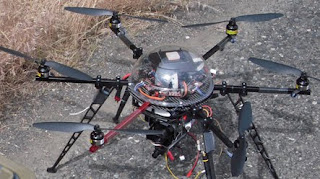In a rough-and-tumble wonderland of plunging canyons and towering buttes, some of the still-raw bluffs are lined with soaring, six-sided stone columns so orderly and trim, they could almost pass as relics of a colossal temple. The secret of how these columns, packed in edge to edge, formed en masse from a sea of molten rock is encrypted in details as tiny as the cracks running across their faces. To add to this mystery's allure, decoding it might do more than reveal the life story of some local lava: it might help explain the history of Mars.
But with trips to Mars hard to come by, the interns of the 2011 Lunar and Planetary Sciences Academy (LPSA) at NASA's Goddard Space Flight Center in Greenbelt, Md., traveled to the Channeled Scablands of eastern Washington state. It's a region that has been helping scientists understand the forces that shape planetary surfaces for a century "The Legacy of Megafloods".
Here, the honeycomb-shaped columns bear a striking resemblance to those spotted in images of Marte Vallis and other regions of Mars. "Many of the landscape features in the Channeled Scablands are similar to ones seen on the surface of Mars, so we can study volcanic activity on Mars by looking in our own backyard," says Andrew Ryan, who was the student coordinator for the LPSA field trip and is now in graduate school at Arizona State University in Tempe.

No comments:
Post a Comment